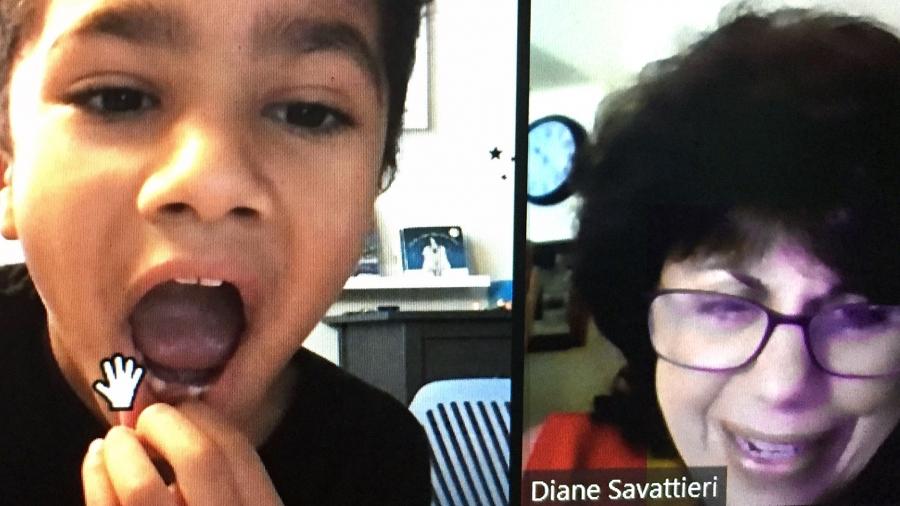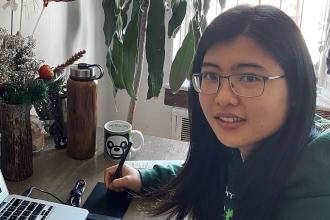Diane Savattieri, kindergarten teacher, PS 185, Bay Ridge, Brooklyn

Never having done remote teaching before, it’s exciting, it’s terrifying and it’s a kick! I was reluctant in March, feeling like I don’t know how to do this. My 24-year old son was my tech support. He said, “Mom, you can do this!”
I have 24 students in my classroom and they’re all there every day, their parents as well. I thought, ‘How in the world am I going to connect with these kids? I don’t know them.’ But it’s like anything else, you share your feelings, talk about your family, and then say, ‘Now, I hope you will be willing to share with me,’ and it just took off from there!
Every morning, I greet them all by name and ask those personal questions about how they feel so they know I’m interested. They share with you as if you’re with them. One little boy said, “Wait, wait, I have to tell you something!” He sticks his face up to the screen, opens his mouth and shows me the tooth he just lost. I took a picture and posted it to my Google Classroom stream, so other kids could see it.
As a kindergarten teacher, I’m used to centers and group activity. How do you do that remotely? That gave me the impetus to try JamBoard, an interactive whiteboard that’s part of Google Classroom, where kids can interact with you. They can sort words, move them into a column or category, and make pictures and post them.
We also use FlipGrid, where children make videos of themselves; they’re reading, trying to figure out the words, sharing their experiences, and the kids comment, ‘Good job!’ or ‘I like that book, too!’ That was my goal, to get them to interact with each other as we would in a classroom.
In the breakout rooms, I give them a topic and let them chat. They have to take turns and listen to others — an important part of kindergarten — and give feedback. It gives them the autonomy they want. I jump in and out of the rooms. If the conversation is not going well, I give them a prompt; if it’s going well, I let them know how much I like what they’re doing. When they come back from the breakout rooms, they look excited and happy, they’ve learned something from each other. Kids are willing and adaptable.
Technology was the smallest part of my day before. I didn’t even like to check my emails. Now it’s the biggest part of my day.
— as told to reporter Cara Metz
Classrooms during COVID
To make the school year feel successful, educators are revising lesson plans, troubleshooting technology and investigating new strategies. Day by day, they’re figuring out what works for their students — and themselves. Read their stories.
